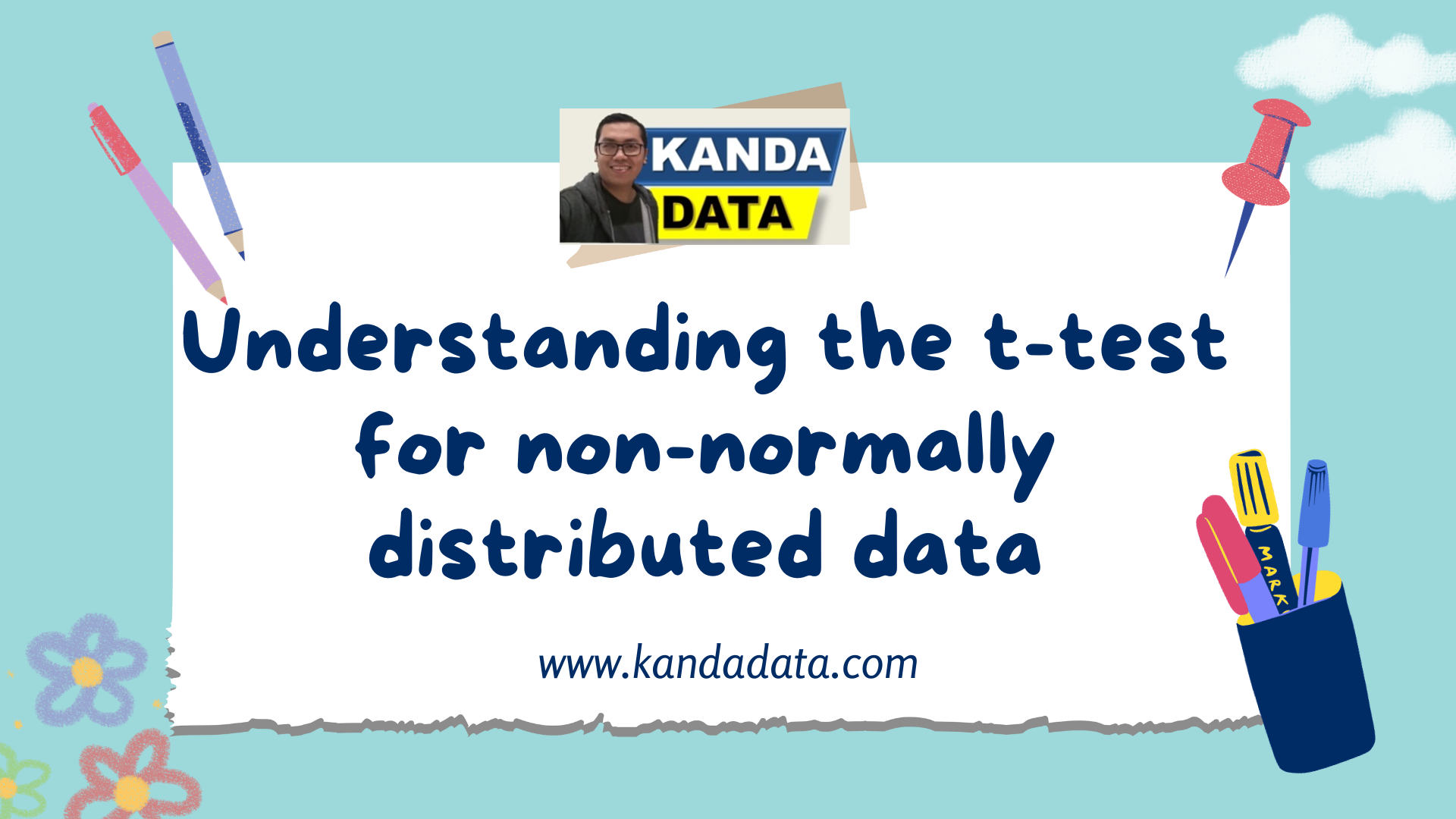Blog
Understanding the t-test for non-normally distributed data
For researchers aiming to explore the differences between two sample groups, the t-test is a viable option. According to theory, the t-test can determine differences between two sample groups, whether they are paired or independent.
Researchers need to consider the required assumptions to ensure that the test results adhere to scientific standards. Apart from the assumption that only two sample groups are being tested, the data should also follow a normal distribution.
What if the normality test results indicate that the data is not normally distributed? After making several attempts, and the data still doesn’t conform to a normal distribution, what should be done? Many of you might have faced this issue. This background motivates me to write this article on understanding different tests when the data is not normally distributed.
Definition and Principles of Difference Testing
In statistics, association tests can be divided into tests of influence, relationships, and difference tests. Difference testing aims to uncover distinctions between variables.
Fundamentally, the t-test is used for difference testing between two sample groups, while one-way ANOVA is employed for difference testing involving more than two sample groups.
The choice between these two types of tests should be based on the required assumptions. In the context of the difference testing topic we’re discussing here, the t-test requires that the data follows a normal distribution.
Therefore, researchers need to conduct normality tests independently. Normality tests are designed to determine whether the data from the examined variable conforms to a normal distribution.
Assumption Testing: Data Normality
We can assess the normality of data through manual calculations or with the assistance of statistical software. We can employ statistical tests to detect data normality and complement them with constructing a histogram.
Commonly used tests for normality include the Shapiro-Wilk test and the Kolmogorov-Smirnov test. Based on these tests, the P-value determines whether the data follows a normal distribution.
Data that adheres to a normal distribution has a P-value greater than 0.05. Conversely, the data is considered non-normally distributed if the P-value is less than 0.05. It assumes a 95% confidence level in the research (alpha 0.05).
When Data is Non-Normally Distributed
When researchers test data for normality and find that it does not conform to a normal distribution, there are several steps they can take to address the issue.
Researchers can increase the sample size as one approach. Additionally, it’s crucial to ensure that the data is measured on a ratio/interval scale, the sampling method is appropriate, and data collection techniques are accurate.
What if the test results still do not show normal distribution?
If various methods attempted by the researcher have not yielded results, and the data still does not conform to a normal distribution, there is no need to force the use of the t-test.
For instance, if a researcher intends to perform a difference test on two paired sample groups and originally planned to use a paired t-test, but the assumption of normal data distribution is not met, the researcher can consider using a non-parametric variable difference test.
The researcher can choose the Wilcoxon test for conducting a difference test on two paired sample groups. In the Wilcoxon test, there is no assumption that the data must follow a normal distribution. Variables measured on an ordinal scale can also be subjected to this test.
Conclusion
The prerequisite assumptions must be met when researchers plan to perform a variable difference test. It is to ensure unbiased estimation results.
Unbiased estimation results lead to scientifically justifiable research conclusions. Therefore, when conducting a difference test, researchers must understand the prerequisite assumption tests well.
Suppose researchers initially intended to use the t-test to examine the differences between two sample groups but failed to meet the normality assumption. In that case, they should make efforts to fulfil the required assumptions.
If, after testing, it turns out that the data does not meet the prerequisite assumption of normal distribution, researchers can consider using a difference test for non-parametric variables.
Well, this is the article I can write for you today. I hope it proves helpful and adds value to the knowledge of those who need it. Stay tuned for more educational articles from Kanda Data in the next week. Thank you.
